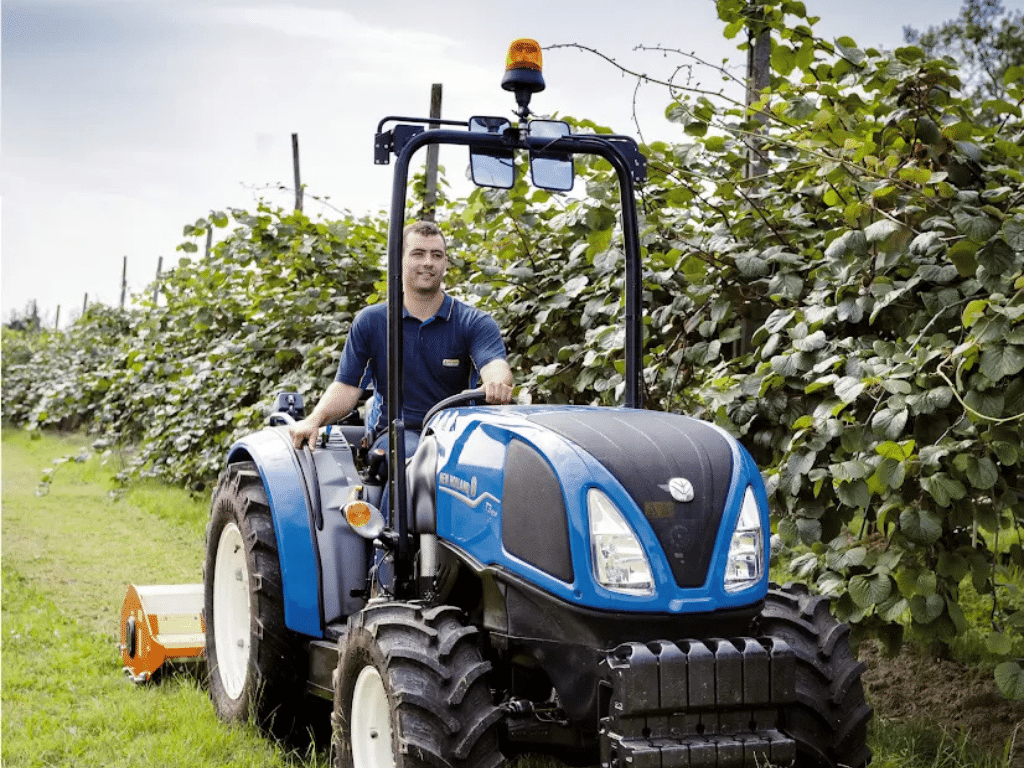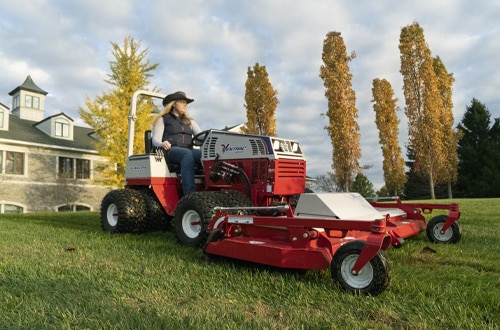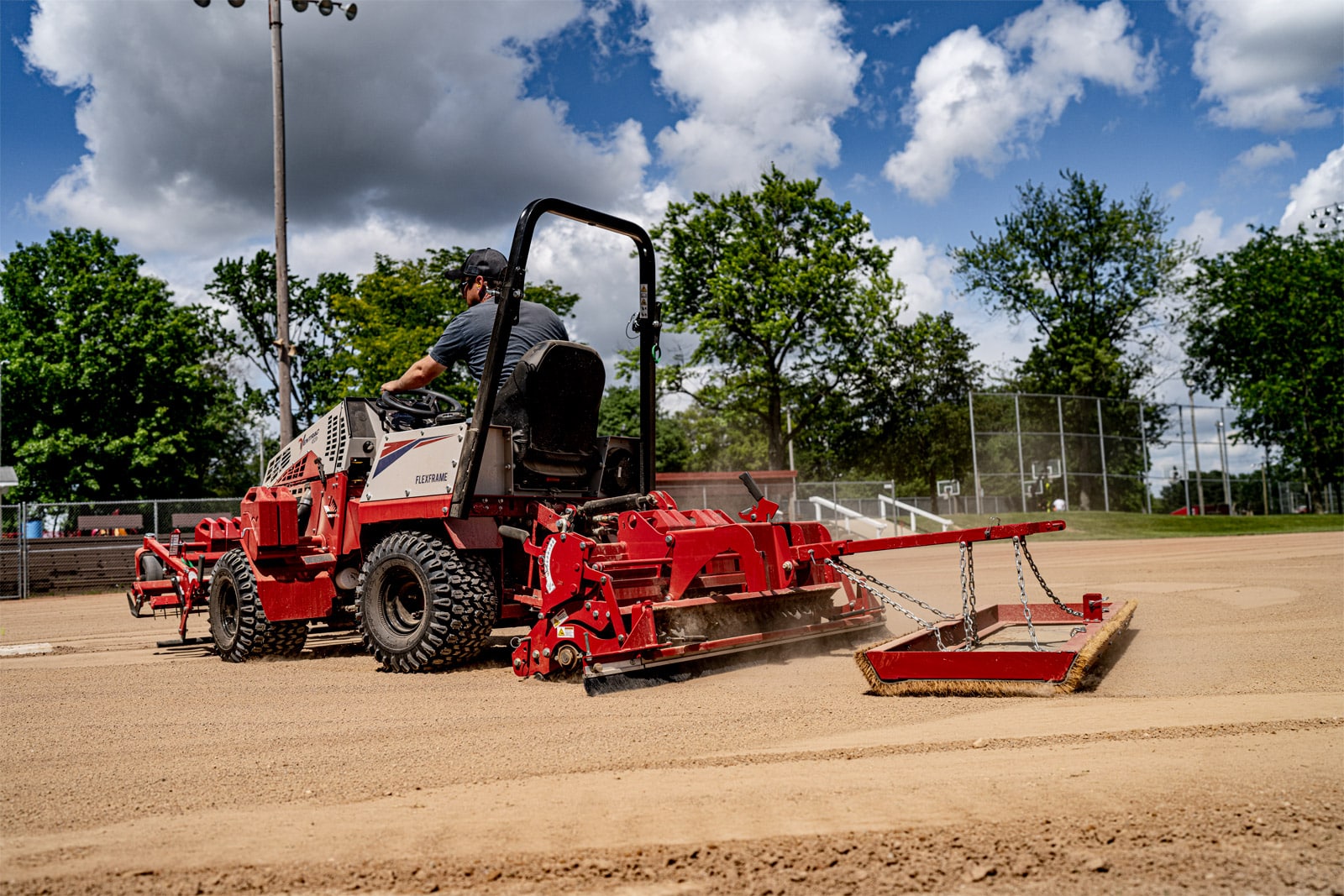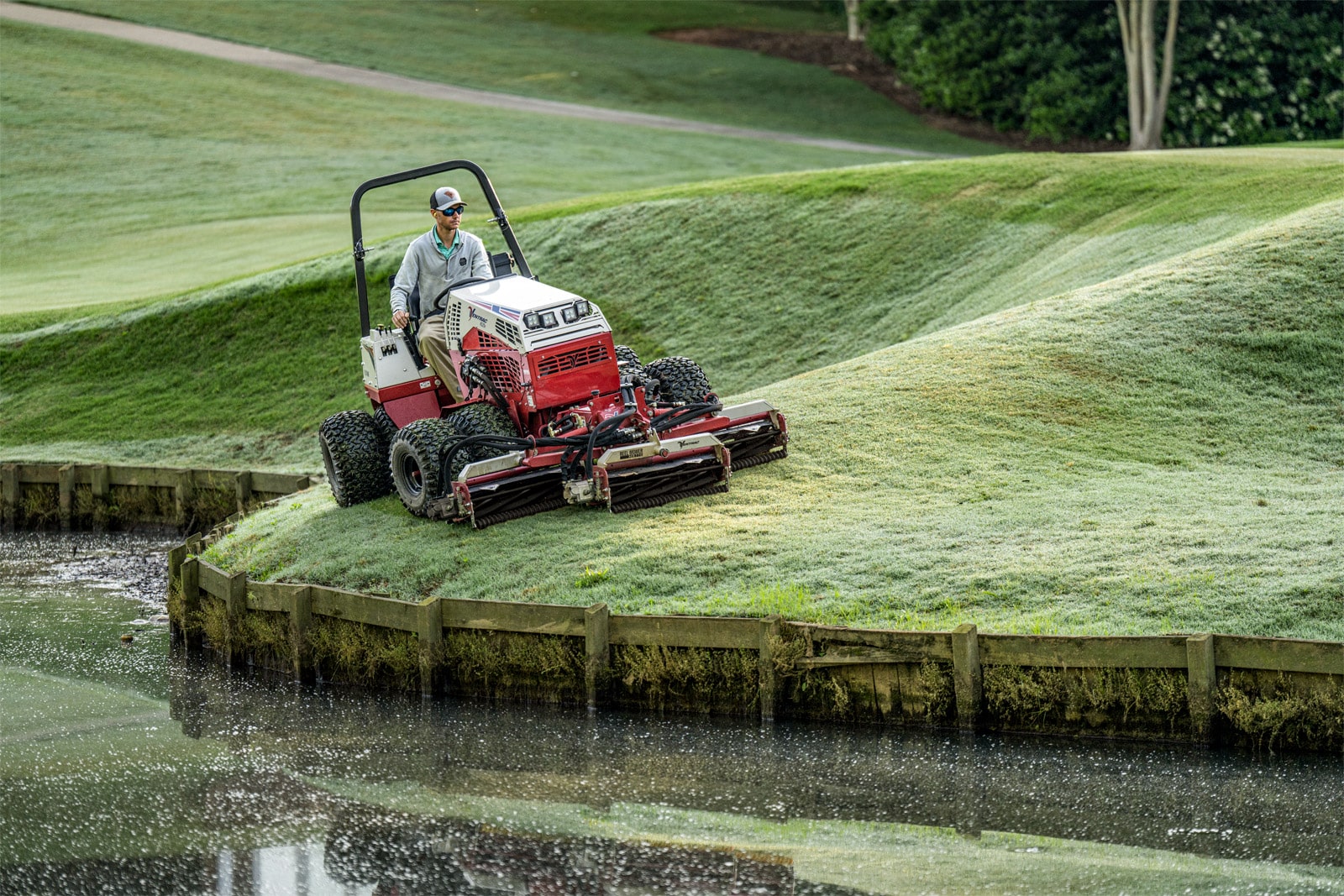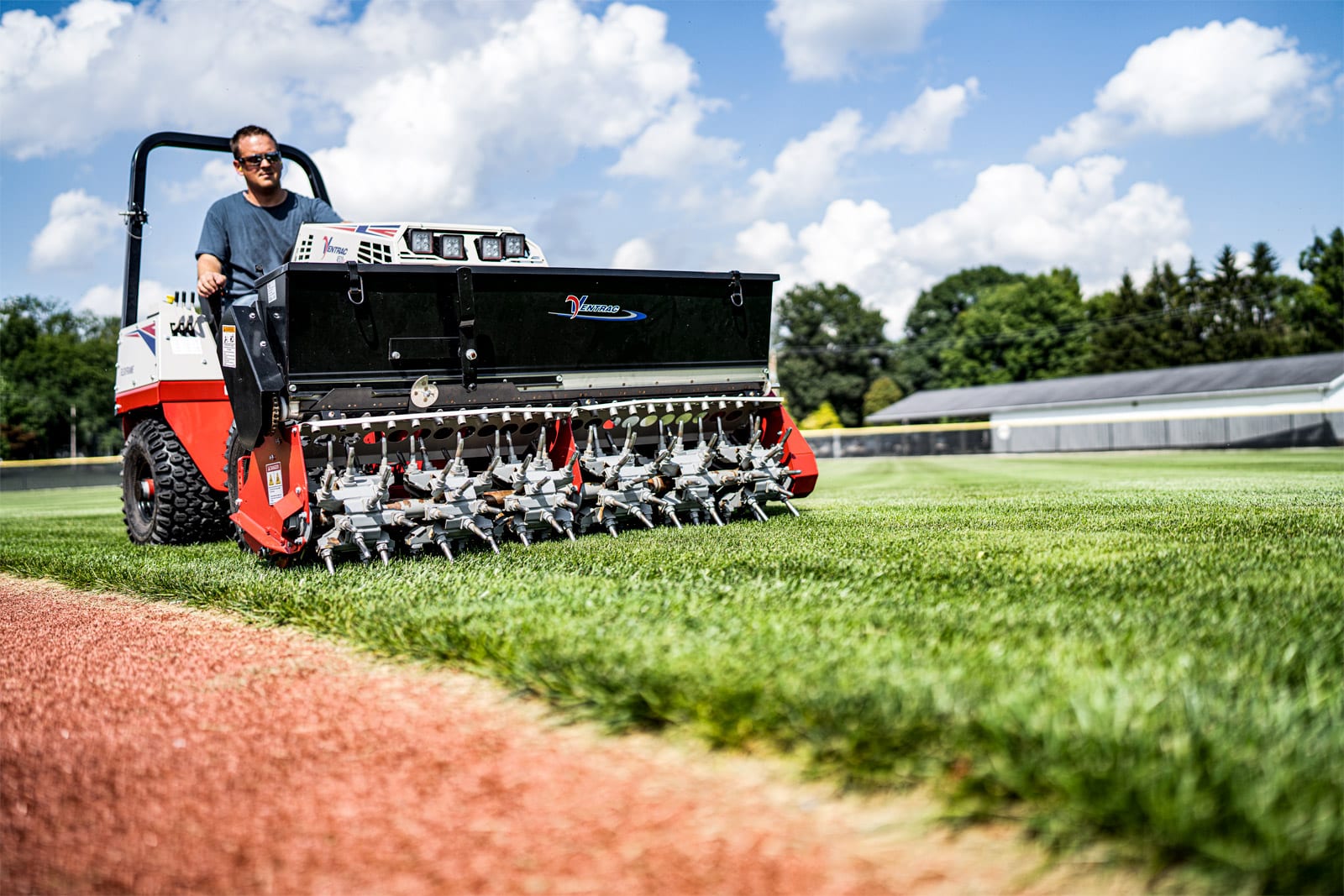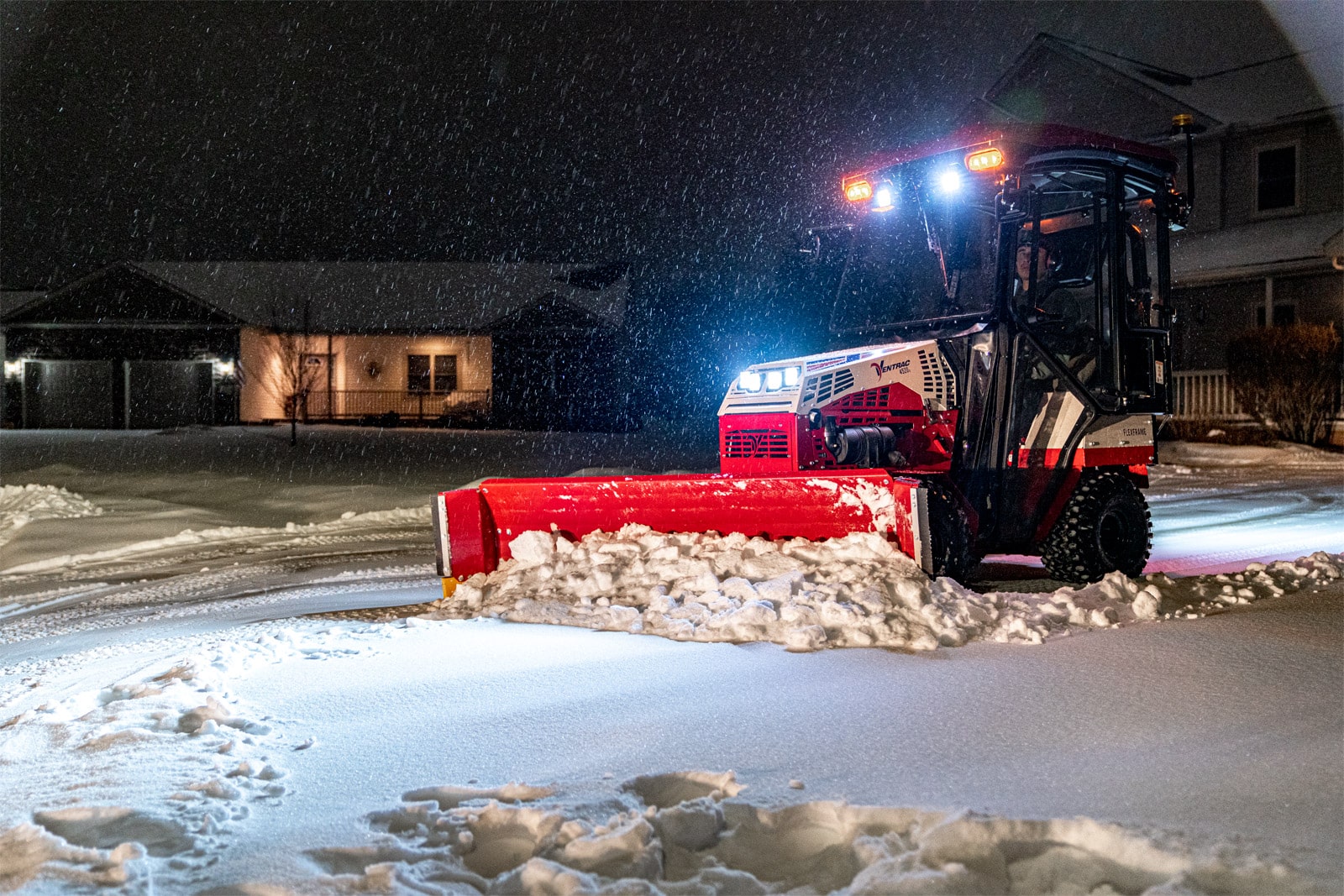Smart Farming in Caledonia: The Future of Agriculture Equipment on Local Fields
Precision in Every Pass, Profit in Every Acre.
The future of agriculture in Caledonia and the surrounding Haldimand-Norfolk region is not solely defined by the size of the harvest, but by the intelligence with which it is cultivated. As farmers face the converging pressures of rising input costs, unpredictable weather patterns, and increasing environmental scrutiny, a new revolution is taking root in our local fields. This revolution is powered by data, precision, and automation. “Smart farming,” once a concept reserved for research papers and mega-operations, is now an accessible and essential strategy for local producers. This article will explore how the integration of advanced technology into modern agricultural equipment is empowering Caledonia’s farmers to work more efficiently, profitably, and sustainably than ever before, ensuring the legacy of our farming community thrives in a new technological era.
Caledonia’s agricultural heritage is etched into the landscape, a story told in the neat rows of corn, soy, and wheat that stretch across the Grand River watershed. For generations, success was a measure of hard work, keen instinct, and a deep understanding of the land. While those values remain the bedrock of our farming community, the tools used to express them are undergoing a profound transformation. Today, the most powerful tool on the farm may not be the one that turns the most soil, but the one that processes the most data. We are in the age of smart farming—an ecosystem of technologies including GPS guidance, variable rate application, telematics, and automation that allows a farmer to manage their fields with surgical precision. This is not about replacing the farmer’s intuition; it’s about augmenting it with real-time, actionable intelligence. For the modern Caledonia farmer, leveraging this technology, particularly the advanced systems integrated into equipment from industry leaders like New Holland, is the key to unlocking new levels of productivity and ensuring the long-term viability of their operation.
1. The Brains of the Operation: GPS Guidance and Autosteer
The gateway to smart farming for most operations is GPS-guided autosteering. This foundational technology has fundamentally changed the experience of operating a tractor, combine, or sprayer. Using highly accurate satellite signals, systems like New Holland’s IntelliSteer™ guide the machine along perfectly straight or curved paths, pass after pass, with accuracy down to a single inch. The immediate benefit is a dramatic reduction in operator fatigue. Instead of gripping the wheel for 12 hours, a farmer can focus on monitoring the performance of the implement and the overall field conditions. More importantly, this precision eliminates costly overlaps and skips. Every inch of the field is covered exactly once, meaning no wasted fuel, seed, fertilizer, or crop protection products. The cumulative savings from this single technology are often so significant that it provides one of the fastest returns on investment in modern agriculture.
- Key Aspects of Guidance Systems:
- Accuracy Levels: Systems range from lower-accuracy WAAS signals (4-6 inch pass-to-pass accuracy), suitable for tillage, to ultra-precise RTK (Real-Time Kinematic) networks that provide sub-inch, repeatable accuracy year after year, essential for planting and strip-tilling.
- Implement Guidance: The next level of precision involves placing a second GPS receiver on the implement itself. This ensures that even on hillsides or uneven terrain where the implement might drift, it stays on the exact intended path.
- Reduced Compaction: By creating controlled traffic patterns and using the same guidance lines for every pass, farmers can significantly reduce overall soil compaction, leading to better root growth and healthier crops.
2. Maximizing Every Inch: Section and Rate Control
Once the machine is being guided with precision, the next logical step is to control the implement with the same level of intelligence. Automatic Section Control (ASC) is a technology that uses the tractor’s GPS position to automatically turn individual sections of a planter or sprayer on and off. When the machine enters an area that has already been covered, such as a headland or a point row in an oddly shaped field, the system instantly shuts off the relevant sections. This completely prevents the double application of inputs. When paired with Variable Rate Control (VRC), the system can also automatically adjust the application rate of seeds, fertilizer, or chemicals based on a pre-loaded “prescription map,” a concept we’ll explore further. For Caledonia’s farmers, this means significant cost savings and a reduced environmental footprint.
- Benefits of Input Control:
- Seed Savings: On a planter, section control prevents over-seeding in point rows and headlands, which not only saves costly seed but also prevents overcrowding and yield loss in those areas.
- Fertilizer and Chemical Savings: On a sprayer or spreader, ASC ensures these products are only applied where they are needed, reducing waste and minimizing the risk of runoff into local watersheds.
- Improved Crop Health: By preventing double applications, the system avoids damaging crops through over-fertilization or chemical burn, leading to a healthier and more uniform stand.
3. The Tractor as a Command Center: Advanced Telematics and Data Management
Modern tractors are no longer just sources of horsepower; they are sophisticated mobile data hubs. Telematics systems, like New Holland’s PLM Intelligence™ platform, use a cellular connection to transmit a constant stream of information from the machine back to the farm office computer or smartphone. A farm manager can see, in real-time, the exact location of their equipment, its fuel levels, engine performance, and operational status. This allows for vastly improved fleet management and logistical planning. Furthermore, this connectivity is a two-way street. Agronomic data, such as planting prescriptions or guidance lines, can be sent directly from the office to the tractor’s in-cab display, like the IntelliView™ monitor, eliminating the need for USB sticks and reducing the chance of human error.
- Capabilities of Modern Telematics:
- Remote Monitoring: View machine parameters, receive alerts for maintenance issues, and track productivity from anywhere. This is invaluable for managers overseeing multiple operators or fields.
- Wireless Data Transfer: Seamlessly move yield maps, as-applied data, and prescription files between the machine and farm management software, ensuring data integrity and saving time.
- Remote Support: With the farmer’s permission, a dealership technician can remotely view the machine’s display to diagnose problems or help an operator navigate complex settings, dramatically reducing downtime.
4. Harvesting with Intelligence: Yield Monitoring and Mapping
Harvest is the moment of truth, where the season’s efforts are quantified. A modern combine equipped with a yield monitor does more than just tally bushels; it creates a detailed, data-rich map of the entire field. As the grain is processed, sensors measure the volume and moisture content, and this data is geo-referenced using the combine’s GPS. The result is a colourful map that shows precisely which areas of the field produced high yields and which underperformed. This is arguably the most valuable piece of data a farm can generate. It moves beyond field averages and provides a granular understanding of the variability within a single field, laying the groundwork for all future precision management decisions.
- Leveraging Harvest Data:
- Creating Management Zones: Yield maps clearly identify distinct zones within a field. These zones can then be soil-sampled independently to understand the underlying causes of yield variability (e.g., nutrient deficiencies, soil type, drainage issues).
- Validating Trials: Farmers can use yield maps to accurately measure the results of on-farm trials, such as comparing two different seed varieties or fertilizer programs side-by-side.
- Building a Historical Database: By layering yield maps from multiple years, farmers can identify stable production zones and make more informed long-term decisions about land management.
5. From Data to Decisions: Variable Rate Technology (VRT)
Variable Rate Technology (VRT) is where all the data comes together to create action. Using the yield maps from the harvest and soil sample results, a farmer, often with the help of an agronomist, creates a “prescription map” for planting or fertilizing. This digital map tells the implement to apply different rates of an input to different zones of the field. For example, it might instruct the planter to increase the seed population in high-productivity zones and decrease it in less fertile areas to save seed and optimize performance. Similarly, it can direct a fertilizer spreader to apply more nutrients to deficient zones and less to areas where levels are already adequate. This is the essence of smart farming: treating every part of the field according to its specific needs, rather than applying a blanket rate everywhere.
- Applications of VRT:
- Variable Rate Seeding: Optimizes plant population across the field, pushing yields in the best areas and saving seed costs in the poorer areas.
- Variable Rate Fertilization: Precisely places nutrients where they are most needed, maximizing crop uptake, improving yield, and preventing the over-application that can lead to environmental runoff.
- Variable Rate Liming: Addresses soil pH variability by applying lime only to acidic zones, improving nutrient availability across the entire field.
6. Automation Beyond Steering: The Next Frontier
While autosteering is now commonplace, the trajectory of automation is pushing further. Technologies are emerging that automate more complex tasks, further reducing operator workload and improving in-field efficiency. New Holland’s IntelliTurn™ system is a prime example. It uses the tractor’s guidance system to automatically calculate and execute the most efficient turn at the end of the row, lining the tractor and implement up perfectly for the next pass without any driver intervention. Looking further ahead, the work being done by companies like New Holland on fully autonomous tractors shows a clear path toward a future where machines can perform entire tasks with minimal human supervision, allowing farmers to focus on higher-level management and analytics.
- Levels of In-Field Automation:
- Task Automation: Systems like IntelliTurn™ automate repetitive tasks, ensuring they are performed with perfect consistency every time.
- Implement Automation: Technologies that allow the tractor and implement to communicate, such as Isobus Class 3, can let the baler, for instance, control the tractor’s forward speed to ensure optimal performance.
- Full Autonomy: The development of driverless tractors that can be monitored remotely represents the future of labour efficiency and operational productivity on the farm.
7. Smart Haymaking: Technology in the Forage Field
Smart farming isn’t limited to row crops. For Caledonia’s livestock and dairy producers, technology is also revolutionizing hay and forage production. New Holland, a leader in hay tools, has integrated intelligent features into its balers and forage harvesters. Moisture sensors within the baler provide real-time readings, allowing the operator to ensure they are baling at the optimal moisture content for high-quality feed and safe storage. Balers equipped with telematics can transmit data on bale count, location, and weight back to the office, simplifying inventory management. This technology ensures the production of consistent, high-value forage, which is the foundation of any successful livestock operation.
- Intelligent Forage Production:
- On-the-Go Moisture Sensing: Allows for immediate adjustments to baling time and the application of preservatives, resulting in higher quality hay.
- Bale Weighing and Logging: Provides precise data for tracking yields, managing inventory, and ensuring consistent bale size.
- Intelligent Speed Control: Systems that allow the baler to control the tractor’s speed ensure the machine is always operating at its peak efficiency, maximizing bales per hour.
8. The “Smart” Approach to Grounds Management
The principles of efficiency and automation extend to the entire farmstead, not just the production fields. For the large lawns and complex landscapes around the main farm buildings and home, robotic mowers like the Husqvarna Automower® offer a “smart” solution. These autonomous units quietly and continuously maintain the turf, freeing up valuable time during the busy growing season. For properties with challenging terrain like steep ditches or hillsides, the advanced engineering of a Ventrac can be seen as a form of smart design. Its ability to work safely and efficiently in areas inaccessible to other machines saves time and manual labour. Even winter management is getting smarter, with advanced plow controls from brands like The Boss and Western offering features that make snow clearing faster and more precise.
- Efficiency Across the Property:
- Robotic Mowing: Automates the time-consuming task of lawn care, providing a consistently perfect cut with minimal human intervention.
- Engineered for Efficiency: The purpose-built design of a Ventrac, while not digital, is an intelligent solution to the physical problem of complex terrain, increasing productivity and safety.
- Smart Winter Management: Advanced plow controllers and salt spreaders with rate control bring a level of precision to winter maintenance, saving material and time.
9. Sustainability and Stewardship Through Technology
One of the most powerful benefits of smart farming is its positive impact on environmental stewardship. Precision technology is inherently sustainable. By eliminating overlap with autosteer, farmers burn less diesel fuel, reducing their carbon footprint. By using section and rate control, they ensure that fertilizer and crop protection products are placed only where the crop can use them, drastically reducing the potential for nutrient runoff into the Grand River and local water systems. This technology allows farmers to achieve the dual goals of maximizing production while minimizing environmental impact, proving that profitability and stewardship can, and should, go hand-in-hand.
- Environmental Benefits of Precision Ag:
- Reduced Fuel Consumption: Perfect pass-to-pass accuracy means fewer passes and less time idling, directly translating to lower fuel use.
- Optimized Nutrient Application: VRT ensures fertilizer is used by the crop, not lost to the environment, protecting water quality.
- Targeted Pest Control: Precise application of pesticides and herbicides reduces the total volume of chemicals used, benefiting the broader ecosystem.
10. The Human Element: The Role of the Trusted Technology Partner
As agricultural equipment becomes more technologically advanced, the role of the local dealership has evolved from simply a sales and repair shop to a vital technology partner. Implementing a smart farming system is not a plug-and-play process. It requires expert installation, calibration, and ongoing support. A farmer needs a partner who can not only sell them a guidance-ready New Holland tractor but also install the GPS receiver, set up the RTK correction signal, help build their first prescription map, and be available by phone to troubleshoot an issue in the middle of planting season. This human element—the trusted advice, reliable service, and deep parts knowledge provided by a dedicated local dealer—is the critical component that makes the promise of smart farming a reality on the ground in Caledonia.
- The Dealer’s Role in the Tech Age:
- Expert Consultation and Installation: Helping farmers choose and correctly install the right technology for their specific needs and goals.
- Training and Education: Providing hands-on training for operators to ensure they are comfortable with and can fully utilize the advanced features of their equipment.
- Ongoing Technical Support: Offering remote and in-field support to diagnose issues and minimize downtime during critical seasons.
- Future-Proofing the Farm: Keeping local farmers informed about the latest technological advancements and how they can be integrated into their operations.
Conclusion:
The fields around Caledonia may look much as they did a generation ago, but the way they are being farmed is changing at light speed. Smart farming is the new engine of agricultural progress, a powerful fusion of data, technology, and a farmer’s timeless connection to the land. By embracing GPS guidance, variable rate control, telematics, and automation, local producers are becoming more precise, more productive, and more profitable. This technological leap, supported by advanced and intelligent equipment from manufacturers like New Holland and facilitated by the expertise of a dedicated local partner, is securing the future of farming in our community. It’s a future that is not only more efficient but also more sustainable, ensuring that our fertile lands will continue to feed our communities for generations to come.
Upgrade Your Operation’s Intelligence
Ready to harness the power of smart farming? Our team is trained on the latest Precision Land Management technologies and can help you develop a strategy to increase your farm’s efficiency and profitability. From a new, fully integrated New Holland tractor to retrofitting your existing fleet, we have the solutions.
- Address: 634 Fourth Line, Caledonia, ON, N3W2B3
- Call: 905-765-5011
- Website: https://oneidanewholland.com/
Frequently Asked Questions (FAQ)
Q1: I have a mixed fleet of older equipment. Can I still adopt smart farming technology?
A1 : Absolutely. While new equipment like a New Holland tractor with PLM Intelligence™ offers the most seamless integration, many core precision ag technologies can be retrofitted onto older machines. We can install aftermarket displays and autosteer systems on most makes and models, providing a cost-effective way to start benefiting from GPS guidance and data collection.
Q2: What is the typical return on investment (ROI) for a GPS autosteer system?
A2: The ROI is surprisingly fast. Most farmers, through input savings on fuel, seed, and fertilizer alone, see a full return on their investment in an autosteer system within one to two growing seasons. When you factor in reduced operator fatigue and improved yields from eliminating crop damage, the benefits become even more significant.
Q3: I’m concerned about data privacy. Who owns the data my machines collect?
A3: This is a crucial question. Reputable manufacturers like New Holland operate on the principle that you, the farmer, own your data. The data is stored securely on cloud-based platforms, and you control who can access it, whether it’s your trusted agronomist, your equipment dealer for remote support, or other third-party applications.
Q4: I’m not a computer expert. How steep is the learning curve for this technology?
A4: While the technology is sophisticated, the user interfaces, such as New Holland’s IntelliView™ displays, are designed to be as intuitive as a tablet or smartphone. There is a learning curve, but that’s where a strong dealer partnership is essential. We provide comprehensive training when you purchase the equipment and ongoing support to help you become confident and proficient.
Q5: Does precision agriculture only make sense for large corn and soybean farms?
A5: Not at all. The core principles of smart farming—reducing waste, optimizing inputs, and making data-driven decisions—apply to any type of agriculture. For smaller or specialty crop operations, like vineyards or vegetable farms, the savings on high-value seed or targeted nutrient applications can be just as impactful, if not more so, on the overall profitability of the operation.


